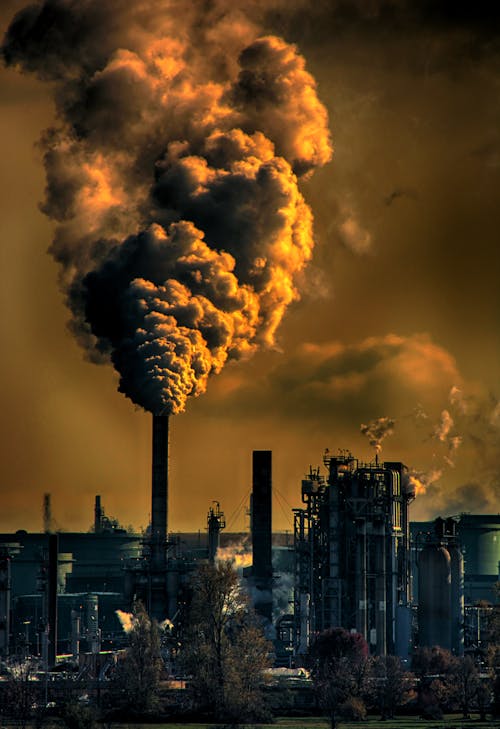
Image Source: Pexels
Air pollution is the presence of harmful substances in the air we breathe. These substances, known as pollutants, can come from a variety of sources, including vehicles, factories, and natural events like wildfires. Air pollution can have serious health impacts, including respiratory issues, heart disease, and even cancer. It can also harm the environment by damaging crops, forests, and bodies of water.
Sources of Air Pollution
There are many sources of air pollution, both human-made and natural. One of the biggest human-made sources is transportation, including cars, trucks, and planes. Other sources include factories, power plants, and agricultural practices like burning fields. Natural sources of air pollution include wildfires, volcanic eruptions, and dust storms.
Types of Air Pollutants
There are several different types of air pollutants, each with its own set of health impacts. Some of the most common pollutants include:
- Particulate Matter (PM): Tiny particles of dust, dirt, and other materials that can get into our lungs and cause respiratory issues.
- Nitrogen Oxides (NOx): Produced by vehicles and power plants, these gases can contribute to smog and acid rain.
- Sulfur Dioxide (SO2): Produced by burning fossil fuels, this gas can irritate the lungs and contribute to acid rain.
- Carbon Monoxide (CO): Produced by vehicles and other combustion sources, this gas can be deadly in high concentrations.
- Ozone (O3): A gas that forms in the atmosphere when NOx and other pollutants react with sunlight. High levels can cause respiratory issues and other health problems.
Health Effects of Air Pollution
Air pollution can have a range of health impacts, depending on the type and concentration of pollutants. Short-term exposure can cause respiratory issues, such as coughing and wheezing, while long-term exposure can lead to more serious conditions like heart disease and cancer. Children, the elderly, and people with pre-existing respiratory or cardiovascular conditions are particularly vulnerable to the health impacts of air pollution.
Measuring Air Pollution
Measuring air pollution involves monitoring the levels of pollutants in the air through a variety of methods. One common method is to use air quality sensors, which can measure the concentration of pollutants in real-time. Another method is to use satellite imagery to track the movement of pollutants across large areas. Governments and other organizations use this data to create air quality indexes (AQIs), which provide a measure of the overall air quality in a given area.
Air Quality Index (AQI)
The AQI is a scale used to measure the air quality in a given area. It ranges from 0-500, with higher values indicating poorer air quality. The AQI is based on the concentration of several different pollutants, including PM, NOx, and O3. When the AQI is high, it is recommended that people limit their outdoor activities and take other precautions to protect their health.
Causes of High AQI
Several factors can contribute to a high AQI. One of the biggest is transportation, including cars, trucks, and buses. Other factors include industrial activities, natural events like wildfires, and weather patterns that trap pollutants in a given area. Climate change can also contribute to high AQIs, as rising temperatures can lead to more frequent and intense wildfires and other natural events.
How to Reduce Air Pollution
There are several steps we can take to reduce air pollution and protect our health and the environment. One of the most effective ways is to reduce our carbon footprint by using public transportation, walking or biking, and using energy-efficient appliances. We can also limit our exposure to pollutants by staying indoors during high AQI days, using air filters in our homes, and avoiding areas with heavy traffic. Governments can also take steps to reduce air pollution, such as implementing emissions standards for vehicles and power plants and investing in renewable energy sources.
Conclusion
Air pollution is a serious problem that affects the health and well-being of people around the world. By understanding the sources and types of pollutants and taking steps to reduce our exposure, we can protect our health and the environment. Governments and other organizations play an important role in reducing air pollution through policies and investments in clean energy and transportation. Together, we can work to create a cleaner, healthier world for ourselves and future generations.


